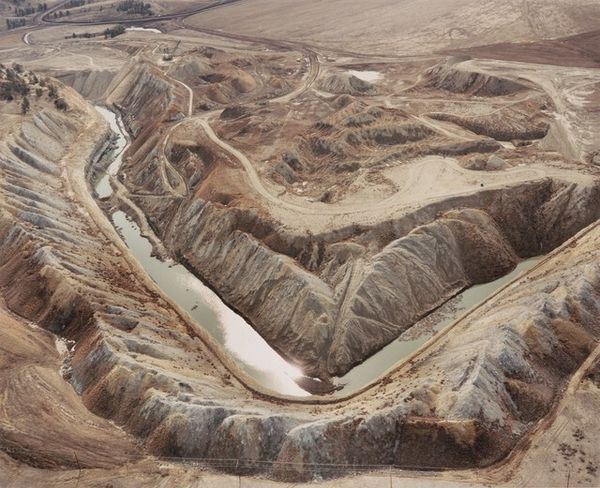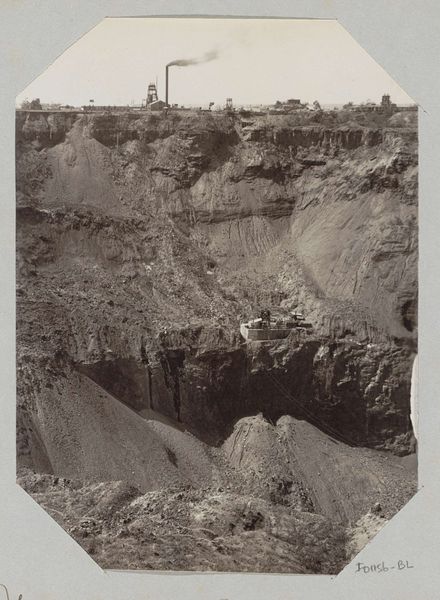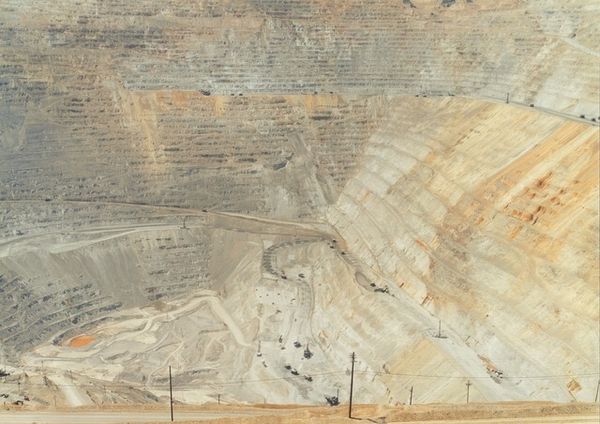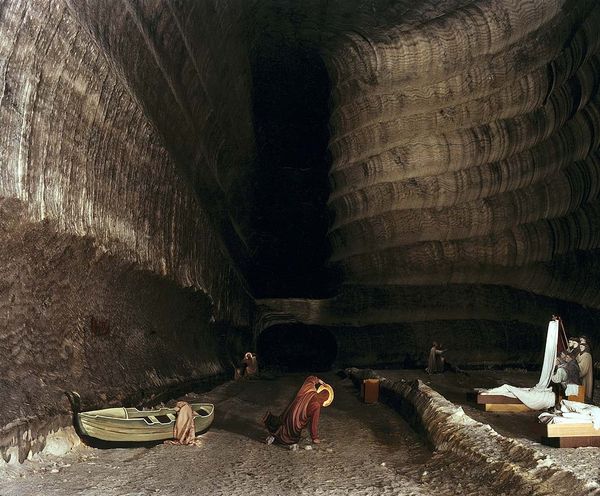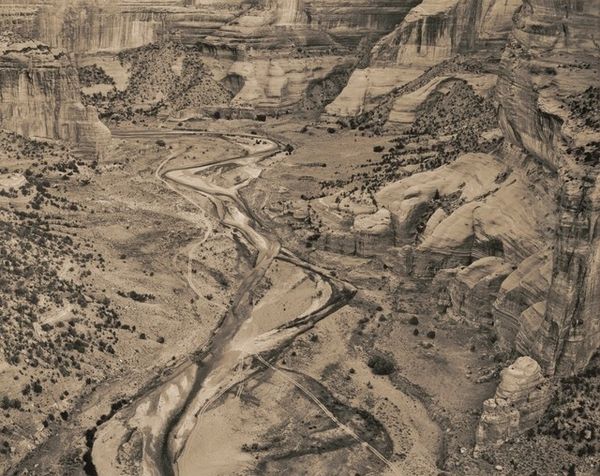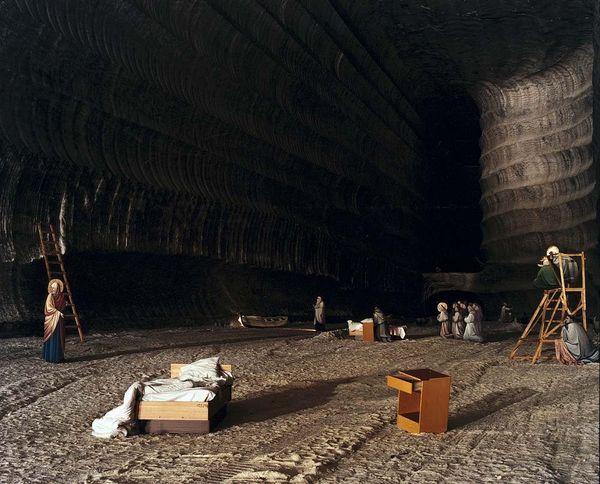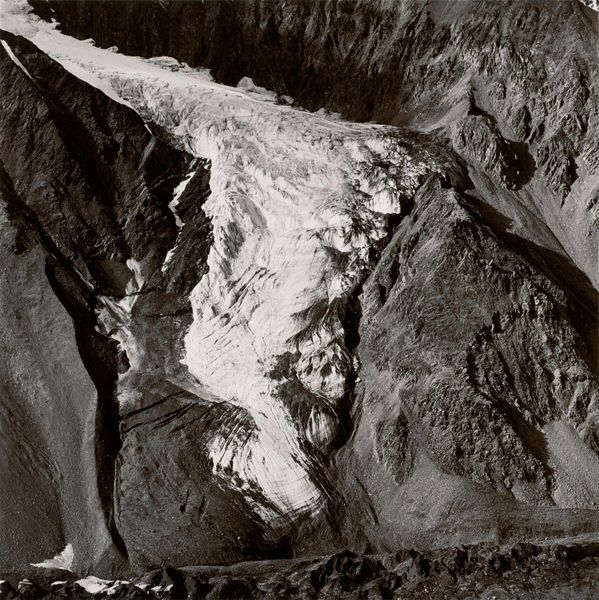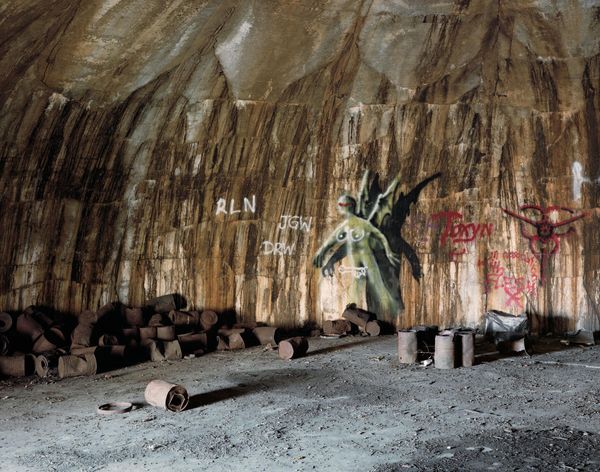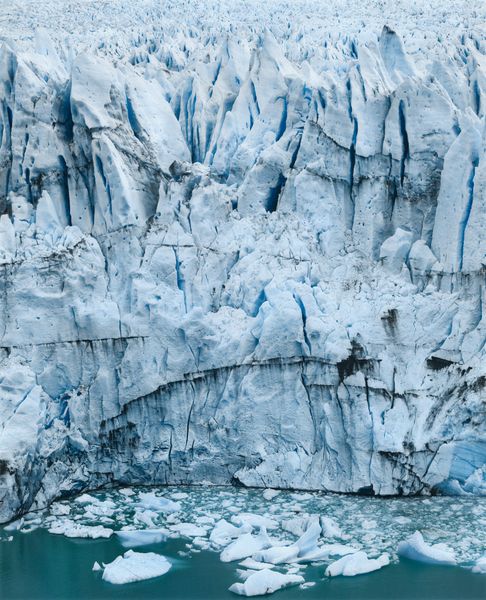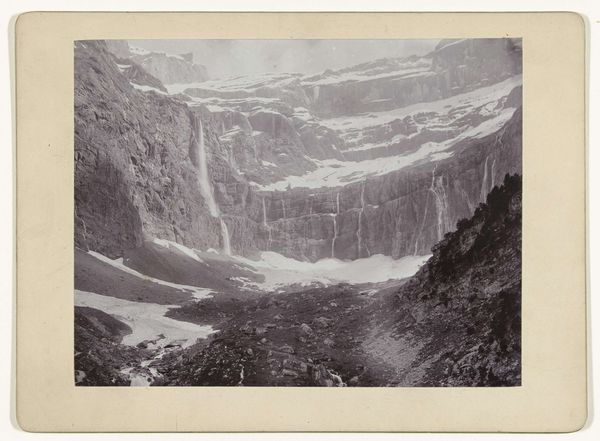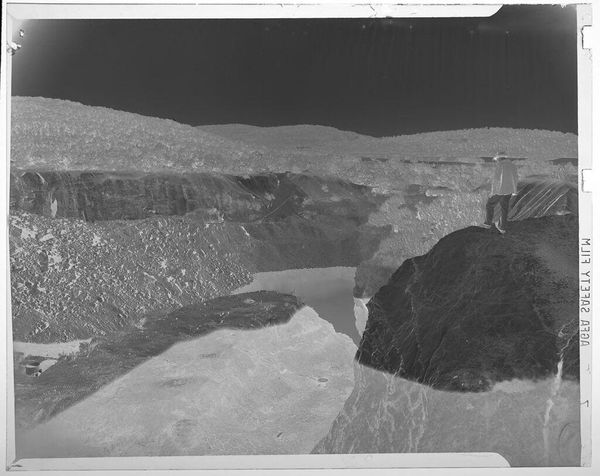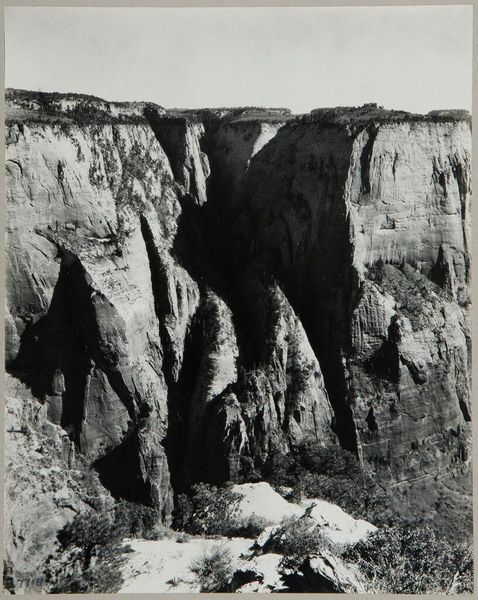
Rock of Ages #7, Active Granite Section, Wells-Lamson Quarry, Barre, Vermont Possibly 1991 - 2001
0:00
0:00
photography
#
urban landscape
#
contemporary
#
drone photography
#
landscape
#
photography
#
environmental-art
#
landscape photography
#
geometric
#
realism
Dimensions: image/sheet: 101.6 × 127.64 cm (40 × 50 1/4 in.) framed: 132.08 × 157.48 × 3.18 cm (52 × 62 × 1 1/4 in.)
Copyright: National Gallery of Art: CC0 1.0
Curator: Edward Burtynsky’s “Rock of Ages #7, Active Granite Section, Wells-Lamson Quarry, Barre, Vermont,” taken sometime between 1991 and 2001, presents a striking view of industry’s impact on landscape. What is your immediate take on this? Editor: My first impression is the sheer scale. It feels almost like looking at some sort of alien architecture, imposing and slightly unsettling. The sharp, geometric forms carved into the earth create a very stark contrast with the water. Curator: It certainly highlights the complicated relationship between humanity and nature. This photograph, with its bird's-eye perspective, illustrates not only industrial exploitation, but also, perhaps, a transformation of the landscape into a cultural artifact. How do you interpret the quarry's role within the social and economic framework of Vermont? Editor: This is an active site. Think about what these materials might represent as architectural statements of government, public buildings, even monuments. Vermont granite carries a certain weight of permanence, used to construct our environments and express political and economic power, speaking volumes about who we memorialize, what we value in society. Curator: Precisely. Burtynsky often focuses on these grand-scale interventions. But does this simply present environmental degradation? I wonder about its relationship to land art from the 60s and 70s; might the artist also suggest it’s a profound—if destructive—sculpture in its own right? Editor: I understand that perspective. But looking closer, it is hard not to see how the geometric scars impact us. The visual impact of such intense industrial activity is both impressive and horrifying. The sharp cuts seem brutal. What effect do you think the aerial viewpoint creates? Curator: It provides critical distance, even objectivity, almost abstracting the scene and raising questions about responsibility and consequences. Seeing the world at this scale also compels us to reflect on the lasting effects on our surroundings. It really embodies our moment, doesn’t it, of simultaneous progress and irrevocable change? Editor: I agree, the image feels like a reflection on modern systems – that intersection where humanity's relentless drive for resources reshapes the natural world into something almost unrecognizable. A monument, maybe, to both creation and destruction.
Comments
No comments
Be the first to comment and join the conversation on the ultimate creative platform.
